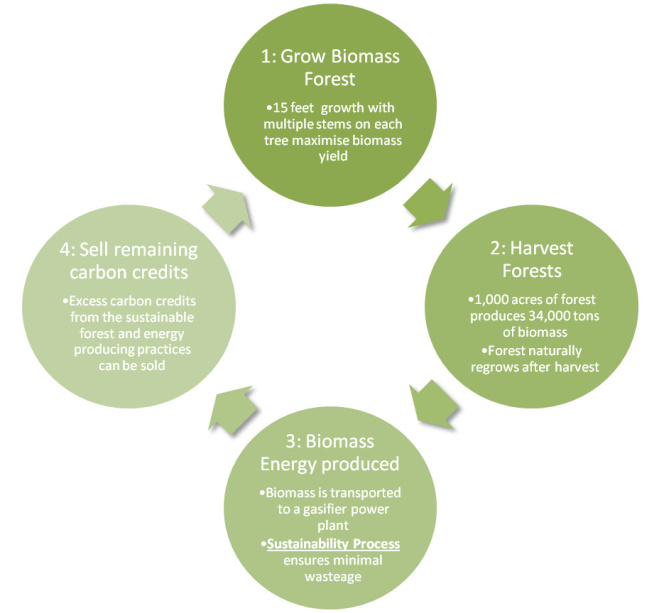Investors:
Our Projects bring strong returns and are good for the enviroment.
Despite being very profitable, ECO2 Projects have significant benefit for the environment - they remove large quantities of CO2 from the atmosphere and prevent the need to log old growth forests. READ MORE.
Land Owners:
Interested in an ECO2 Project on your land?
ECO2 partners with land owners to establish a Project on their land. ECO2 does all of the work and runs the project and the land owner gets a share in the profit. READ MORE.
Contact Us:
Interested in finding out more about ECO2:
Want to know more about ECO2 International? If you are an investor, land owner, supplier have a particular expertise or just interested in knowing more about ECO2 use this link to get in touch. CONTACT US.

1: Grow Biomass Forest. The biomass is grown using a process to maximize the yield from each tree. Unlike the plantation forests that ECO2 grows for lumber the biomass trees grow with multiple stems from the stump. Trees are grown for only one year with the stems competing for light which promotes rapid growth. The planting methodologies of ECO2 allow the forest to be easily scaled up to much larger forests using a 1,000 acre module based system.
2: Harvest Forests. Harvest of the forest is conducted annually and produces 34,000 tons of Kiri Biomass per 1,000 acres. Usually the biomass is turned into small pellets for ease of transportation and minimizing related emissions.
3: Biomass Energy Production. The gasifier processes the pellets into syngas, which is used to turn a hot air turbine which creates electricity that is sent to the grid.
Energy Production Sustainability Process
1 a. Remaining flue gases are captured and sent
to a plasma arc to heat a boiler where hot water is sent throughout the
community providing perpetual hot water.
b. Any remaining CO2 is sent to algae ponds to feed algae that produce
bio-diesel.
c. Hot and cold water is sent throughout the community. This water is
captured in sewage containment where the solids and liquids are
separated.
2: a. Solid waste is sent to an aerobic digester for methane gas
production.
b. This gas is captured for additional feed stock in energy production.
c. The excess solids are taken out and dried before being sent to the
gasifier for syngas production.
3. a. Liquids are process to clear remaining impurities and sent to
algae ponds to feed algae in biodiesel production.
b. Water is stiffened from the algae ponds to feed hydroponic food
production where 3 acres can produce enough food to feed 10,000 people.
4: Sell Carbon Credits. Carbon Credits created from the growing of the Biomass forest which sequesters carbon dioxide from the atmosphere and also emissions saved through the sustainable gasification process get accredited and then can be sold on open markets around the world.
The current commercial per ton price of wood pellets in northern Europe is $295.00 as of 6-1-2010. Price trends are rising. Using wood pellets to make electricity is among the lowest costs of all energy production, being just above coal.
 Biomass
Sustainable Energy Model
Biomass
Sustainable Energy Model